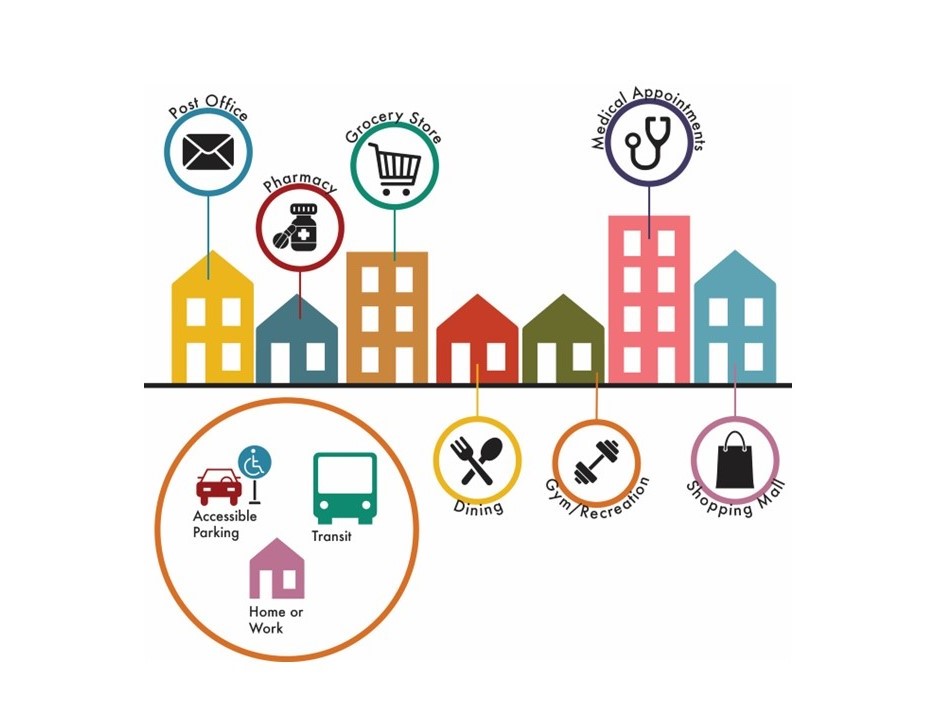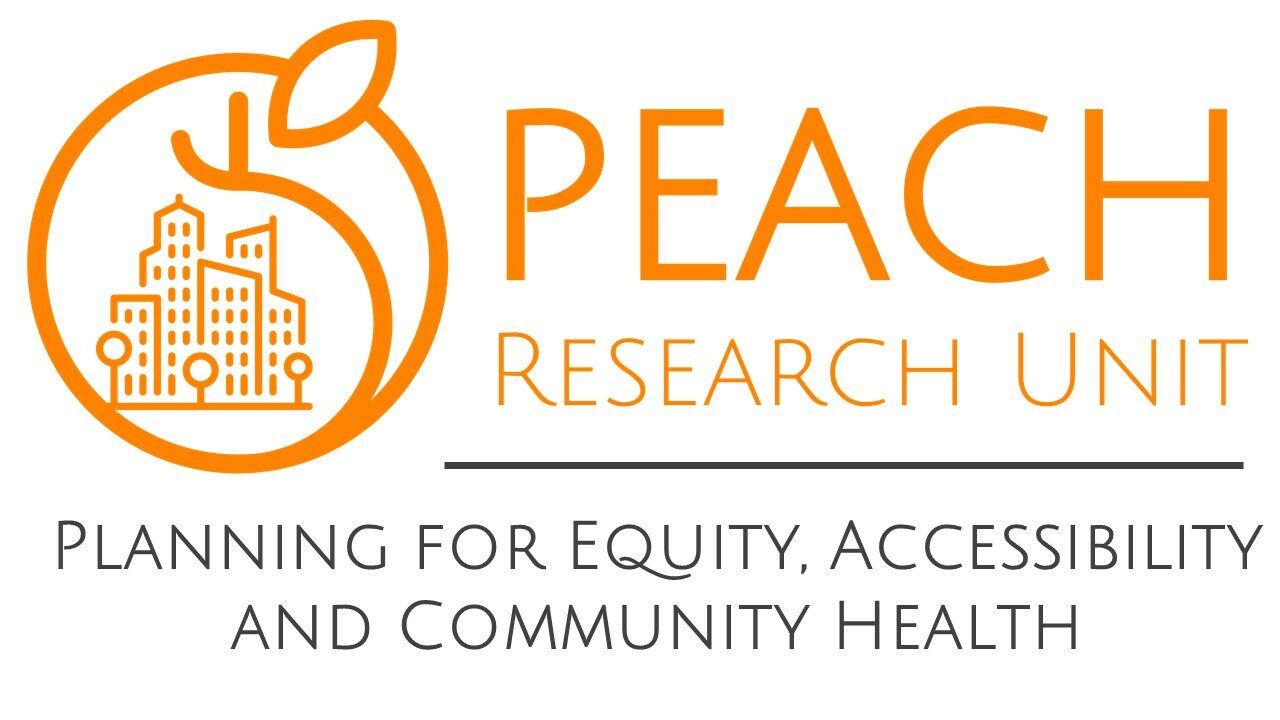Benchmarking Spatial Access for Community-Level Accessibility

What is this research about?
The accessibility of public spaces is often studied by looking at either,
- the quality of pedestrian infrastructure along individual sidewalks, trails, street crossings, etc. to facilitate use by pedestrians of all ages and abilities, or
- the proximity of services and amenities from homes and transit – i.e., how far pedestrians need to travel to reach essential destinations.
The PEACH Research Unit of Dalhousie University is conducting a study that combines these perspectives to learn how to assess spatial accessibility that is inclusive of the needs of residents with disabilities.
This research asks,
- What services and amenities are of priority to residents living with disabilities to access close to home?
- How far is too far to travel as a pedestrian to reach these destinations?
- What features in the built environment are necessary in order to be able to navigate safely and efficiently?
To help answer these questions, the research team will be consulting directly with individuals living with all types of disabilities to learn from their experiences, neighbourhood travel, and diverse needs as pedestrians and transit users.




How you can participate
We’re collecting information from participants via an online survey as well as focus groups we’re conducting online and in person. Select the option you’re interested in below to find out more.


